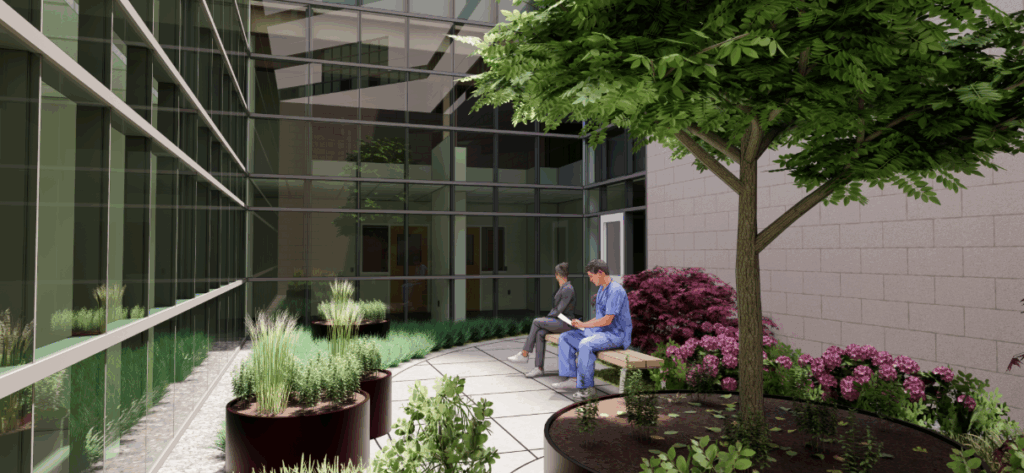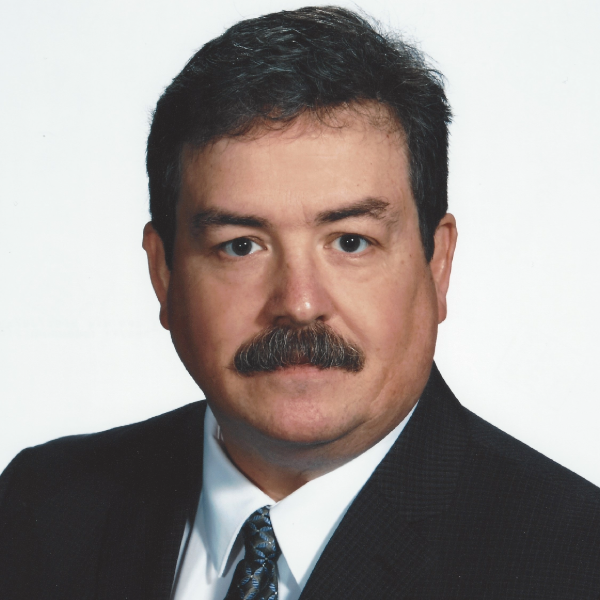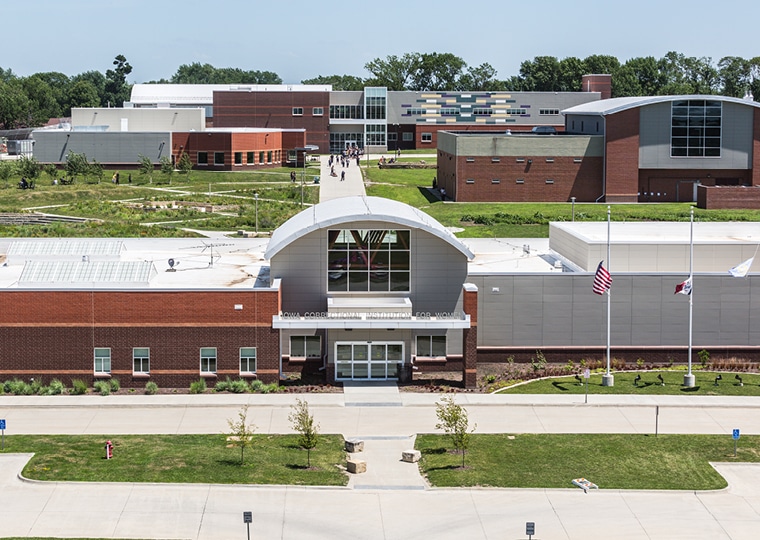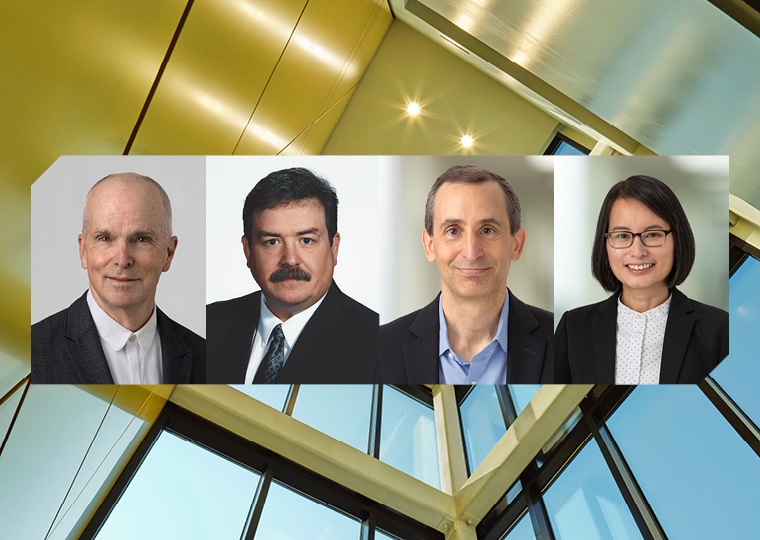When we first engaged with Macomb County to envision its new Central Intake and Assessment Center (CIAC), it was clear this project would take a transformational approach to justice facility design – prioritizing diversion and treatment alongside safety and security. From the outset, the county’s leadership – Executive Mark Hackel and Sheriff Anthony Wickersham – were focused on creating something fundamentally different: a facility designed not just for detention, but as a point of intervention where public safety and public health intersect.
In Michigan, as in much of the nation, counties have seen a significant increase in individuals entering the justice system with serious mental health and substance use challenges. In Macomb County, nearly 70% of the incarcerated population has some form of behavioral health or substance use need. Sheriff Wickersham and Executive Hackel understood the impact of this crisis firsthand, drawing on their decades of service within the county’s law enforcement and corrections system. From the beginning, they recognized the importance of creating a facility that could serve as a true link between the justice system and community-based healthcare. Their vision was not just to build a new intake facility, but to rethink the role a jail plays within the broader public health continuum.
That vision has shaped every aspect of the CIAC’s design.

More than a standalone building, this project reimagines the entire county jail campus – a complex that has evolved incrementally since the 1960s. Our task was to evaluate which existing facilities could remain, identify those that were underutilized or no longer meeting operational needs and to design a new structure that would integrate seamlessly with the existing housing tower to form a unified system. Once complete, the result will be a purpose-built intake and treatment facility, directly linked to the existing jail, designed to support assessment, treatment and rehabilitation from the moment someone enters custody.
At its core, the CIAC is designed to serve people in crisis. Starting at intake, every person entering the facility will receive immediate medical and mental health assessments, informing their housing placement, treatment plans and eventual reentry planning. Specialized housing units will support acute and sub-acute mental health populations, as well as those with substance use disorders, in a therapeutic, healing environment. Designed around the direct supervision model, these spaces allow residents to receive care in settings that are both secure and supportive – spaces that feel restorative, with abundant natural light, calming colors and reduced noise levels.
Trauma-informed design is central to our approach. Most of the people who pass through this facility have experienced severe trauma in their lives. That understanding informs everything from our material and color choices to how we handled lighting, acoustics and spatial organization – our goal is to minimize environmental stressors and create a normalized, healing environment. It also shapes how we’ve thought about staff wellbeing. From new and expanded workout areas, locker rooms and showers, the staff-only courtyard open to the sky, and a food court offering healthy choices, we’ve focused on creating spaces where correctional and clinical staff can decompress and recharge – because their wellbeing indirectly influences the quality of care provided.

Just as importantly, the CIAC is a civic building. From the entry plaza to the public lobby, we’ve designed it to feel accessible and humane. Our goal is for visitors – whether they’re family members, volunteers or legal professionals – to feel welcomed and oriented from the moment they enter. As County Executive Hackel said, “It doesn’t look like a jail. It looks like an actual healthcare facility.” That shift in perception is intentional.
Bringing this vision to life has been a collaborative effort. Together with our design partners at PARTNERS in Architecture – and in close coordination with Macomb County’s Executive Office, Sheriff’s Office, Community Mental Health Board, correctional staff, medical providers and numerous other stakeholders – we’ve worked as a unified team to help form and realize the county’s goals. Together, we’ve combined local knowledge and national expertise to create a facility that will serve as an inspiration for others across the country.










